 February 11, 2021 John E. Ross, KD8IDJ, Editor
| ||||||
ARRL Headquarters will be closed on Monday, February 15, for Presidents Day and will re-open on Tuesday, February 16, at 8 AM EST. ARRL to Extend Field Day Rule Waivers from 2020, Add Class D and E Power Limit The COVID-19 pandemic-modified ARRL Field Day rules from 2020 will continue this June with the addition of a power limit imposed on Class D (Home Stations) and Class E (Home Stations-Emergency Power) participants. The news from the ARRL Board's Programs and Services Committee "This early decision should alleviate any hesitancy that radio clubs and individual Field Day participants may have with their planning for the event," said ARRL Contest Program Manager Paul Bourque, N1SFE. For Field Day 2021, Class D stations may work all other Field Day stations, including other Class D stations, for points. This year, however, Class D and Class E stations will be limited to 150 W PEP output. For Field Day 2021, an aggregate club score will be published -- just as it was done last year. The aggregate score will be a sum of all individual entries that attributed their score to that of a specific club. ARRL Field Day is one of the biggest events on the amateur radio calendar. Last summer, a record 10,213 entries were received. "With the greater flexibility afforded by the rules waivers, individuals and groups will still be able to participate in Field Day, while still staying within any public health recommendations and/or requirements," Bourque said. The ARRL Field Day web page contains complete rules and entry forms, as well as any updated information as it becomes available. Join the ARRL Field Day Facebook group. Read an expanded version. Orlando HamCation Special Edition Online Event and QSO Party Set for February 13 - 14 The Orlando HamCation Special Edition online event and QSO Party will take place this weekend, February 13 - 14. The online event will include youth, technology, contesting, and vendor webinar tracks via Zoom. ARRL will also present two webinars on Saturday, February 13. The ARRL Member Forum at 1 PM EST, will be moderated by ARRL Southeastern Division Director Mickey Baker, N4MB. Presenters Gilbert also will be the moderator for an Amateur Radio Emergency Service (ARES®) presentation at 3 PM EST. The ARES presentation will include ARRL Northern Florida Section Emergency Coordinator Karl Martin, K4HBN, and Southern Florida SEC John Wells, W4CMH. The HamCation QSO Party -- a 12-hour on-air event, will also take place this weekend. Nine HamCation special event stations with 1 × 1 call signs will be on the air with combined suffixes spelling out HamCation (e.g., K4H, W4A, K4M, etc). Scores will be posted on www.3830Scores.com -- no logs are required.
ARRL to Offer Weekend of Specials for Hams Missing Orlando HamCation® 2021. This weekend, February 13-14, was supposed to be the ARRL National Convention at Orlando HamCation. While members will have to wait until next year for our National Convention, ARRL will be ARRL to FCC: Additional Volunteer Examiner Coordinators Not Needed ARRL has told the FCC that no additional Volunteer Examiner Coordinators (VEC) are needed to oversee the administration of amateur radio exams by Volunteer Examiners (VEs). Examination opportunities have continued to be widely available throughout the US -- except for a couple of months during the onset of the COVID-19 pandemic -- and adding VECs to the 14 now in place would "have no "We found that even though 10 of the 12 months for calendar year 2020 were times of severe disruption throughout the nation, including for FCC and ARRL Headquarters staff, amateur examination opportunities and numbers were strong," ARRL told the FCC. "Instead of increasing the number of VECs, we would encourage volunteers to become accredited as VEs and to volunteer to help the current VECs wherever possible," ARRL said. "Many of the VECs would welcome help." ARRL said VEs, not VECs, are responsible for administering amateur radio exams. The number of new and upgraded licenses has been in line with earlier years, "with noticeable increases in the 4 months following the lockdown that occurred in many areas in the early spring," ARRL pointed out. ARRL said, "Increasing the number of VECs would expand the complexity of VEC coordination and management, increase demand on FCC resources to interface with additional organizations, and raise the potential for abuse and fraud." Read an expanded version. ARRL Podcasts Schedule
The On the Air and Eclectic Tech podcasts are sponsored by Icom. Both podcasts are available on iTunes (iOS) and Stitcher (Android), as well as on Blubrry -- On the Air | Eclectic Tech. RadFxSat-2/Fox-1E Designated AMSAT-OSCAR 109 as Troubleshooting Continues Launched on January 17, the RadFxSat-2/Fox-1E CubeSat has been designated as AMSAT-OSCAR 109 (AO-109). The satellite, which carries a telemetry beacon and a linear transponder, along with "Work continues to recover the telemetry beacon and characterize the transponder with the goal of opening it for general use," AMSAT said this week. "Testing and characterization of RadFxSat-2/AO-109 continues." On January 27, a ham in Nevada reported weakly hearing his CW signal via the spacecraft's transponder. AMSAT engineering and operations teams made the official AO-109 designation after confirmation that the linear transponder was functional, although with a low-level downlink signal. Read an expanded version. -- Thanks to AMSAT News Service via Mark Hammond, N8MH ARRL Learning Network Webinars Visit the ARRL Learning Network (a members-only benefit) to register, check on upcoming webinars, and to view previously recorded sessions. Interesting Stories about Ham Radio & Weather Spotting -- Rob Macedo, KD1CY One of the most critical ways amateur radio supports agencies such as the National Weather Service (NWS), National Hurricane Center, and emergency management is through weather spotting via the NWS SKYWARN program. This presentation reviews some interesting stories about how amateurs involved in SKYWARN have saved lives Thursday, February 11, 2021 @ 8 PM EST (0100 UTC on Friday, February 12) Maxim Memorial Station W1AW Tour -- Joe Carcia, NJ1Q, W1AW Station Manager Maxim Memorial Station W1AW, located in Newington, Connecticut, was established to honor the memory of ARRL's co-founder and first president, Hiram Percy Maxim. Although the first radio station of ARRL was actually located in Hartford, Connecticut and active as W1MK, W1AW in Newington is known worldwide and considered the radio station most associated with Hiram Percy Maxim. Formally established in 1938 -- nearly 2 years after the death of Hiram Percy Maxim -- W1AW has consistently been on the air, save for the time when the station was ordered off the air by the FCC because of World War II. Thursday, February 18, 2021 @ 3:30 PM EST (2030 UTC) Talking to Astronauts: An Elementary School's Exciting ARISS Experience -- Diane Warner, KE8HLD This is a story about Tallmadge Elementary School's participation in a once-in-a-lifetime ARISS (Amateur Radio on the International Space Station) school contact. Learn about their amazing journey leading up to the amateur radio contact with an astronaut on the International Space Station. The excitement of the entire experience was shared not just by the students, but included faculty, parents, the community, and local amateur radio operators. You will also learn how to begin the process of submitting your own ARISS contact proposal. Tuesday, March 2, 2021 @ 1 PM EST (1800 UTC) Visit the ARRL Learning Network (a members-only benefit) to register, check on upcoming webinars, and to view previously recorded sessions. IARU Agrees On Preliminary WRC-23 Positions The International Amateur Radio Union (IARU) has agreed on its preliminary positions for World Radiocommunication Conference 2023 (WRC-23), according to Barry Lewis, G4SJH, Chair of IARU Region 1 Spectrum Affairs. "The preparatory work for WRC-23 has started across all [three] regions in both the ITUâR [Radiocommunication Sector] and the Lewis said the IARU Administrative Council has agreed on initial preliminary positions covering the six most important agenda items for the Amateur and Amateur-Satellite Services. The preliminary IARU positions:
Amateur Radio in the News ARRL Public Information Officers, Coordinators, and many other member-volunteers help keep amateur radio and ARRL in the news. Ham Radio Forms a Planet-Sized Space Weather Sensor Network Eos, February 9, 2021 Mississippi Valley Amateur Radio Holds Training in WXOW's Parking Lot ABC News 19 (Minnesota/Wisconsin), February 6, 2021 When Scoutmasters Got Trained to be Amateur Radio Operators Net News Ledger (Canada), February 5, 2021 Concord Student Wins Congressional App Challenge Patch News (California), February 4, 2021 Share any amateur radio media hits you spot with us. Article: Ham Radio Forms a Planet-Sized Space Weather Sensor Network The article "Ham Radio Forms a Planet-Sized Space Weather Sensor Network," which appeared on February 9 in Eos, Earth & Space Science News, sprang from a project by the Ham Radio Science Citizen Investigation (HamSCI), founded by Nathaniel Frissell, W2NAF, of the University of Scranton, one of the paper's authors. The other authors are Kristina Collins, KD8OXT, who led the project, and David Kazdan, AD8Y, both of Case Western Reserve University (W8EDU). The article posits that, with their experience dealing with ionosphere-influenced propagation, radio The article covers the methods and research being used to monitor the effects of solar activity on Earth's atmosphere, telecommunications, and electrical utilities -- and the valuable data being crowdsourced from amateur radio signals. "To fully understand variability on small spatial scales and short timescales, the scientific community will require vastly larger and denser sensing networks that collect data on continental and global scales," the article asserts. "With open-source instrumentation cheaper and more plentiful than ever before, the time is ripe for amateur scientists to take distributed measurements of the ionosphere -- and the amateur radio community is up for the challenge." "The reach of these crowdsourced systems, and the support of the amateur community, offers tremendous opportunities for scientific measurements," the article notes. The research acknowledges a handful of HamSCI collaborators -- from organizations and universities -- and is supported by National Science Foundation grants. HamSCI's Personal Space Weather Station initiative aims to develop a network of specially equipped amateur stations that will allow amateurs to collect useful data for space science researchers. Ham radio operators and researchers, through HamSCI, are designing hardware for a distributed network of personal space weather stations, the article explains. The 2021 HamSCI virtual workshop will take place March 19 - 20. Read an expanded version. Announcements
A "Perfect Coronal Mass Ejection" Could Be a Nightmare A new study in the research journal Space Weather considers what might happen if a worst-case coronal mass ejection (CME) hit Earth -- a "perfect solar storm," if you will. In 2014, Bruce Tsurutani of Jet Propulsion Laboratory (JPL) and Gurbax Lakhina of the Indian Institute of Geomagnetism introduced the "perfect CME." It could create a magnetic storm with intensity up to the saturation limit, a value greater than the Carrington Event of 1859, the researchers said. The interplanetary shock would arrive at Earth within about 12 hours, the shock impingement onto the magnetosphere would create a sudden impulse of around 234 nanoteslas (nT), and the magnetic pulse duration in the magnetosphere would be about 22 seconds. Orbiting satellites would be exposed to "extreme levels of The CME's 12-hour travel time would allow little margin for preparation. The CME would hit Earth's magnetosphere at 45 times the local speed of sound, and the resulting geomagnetic storm could be as much as twice as strong as the Carrington Event. Power grids, GPS, and other services could experience significant outages. More recent research led by physicist Dan Welling of the University of Texas at Arlington took a fresh look at Tsurutani and Lakhina's "perfect CME," and given improvements in spaceweather modeling, he was able to reach new conclusions. Welling's team found that geomagnetic disturbances in response to a perfect CME could be 10 times stronger than Tsurutani and Lakhina had calculated, especially at latitudes above 45 to 50°. Read an expanded version. Club Gets Double Duty from Minnesota QSO Party 2021 Operation The Mississippi Valley Amateur Radio Association (MVARA) fielded a team to the parking lot of a local TV station to take part in the Minnesota QSO Party over the February 7 - 8 weekend. Not only did the group get some emergency exercise training but garnered positive publicity for amateur radio from the station's news team. Using special event call sign W0M, 10 radio amateurs -- including one newly minted
General-class ham who's still awaiting his call sign -- pitched in. The operation took place in an emergency communications bus, with everything set up like a Field Day operation, although in the Minnesota winter. "MVARA recently acquired a full-sized emergency communications bus that needed some TLC," said Scott Neader, KA9FOX -- one of the operators. "The club has been refurbishing it over the last year and was looking for an opportunity to operate from the bus to test out some of the recent improvements, as well as to test our ability to set up a viable HF communications center in less-than-ideal conditions." "As a bonus to operating at the TV station, the news department couldn't resist checking out what we were doing, and we wound up being a part of the 10 PM news broadcast," Neader said. Judging from the statistics the club posted on 3830.com, the operation was a great success. "We had a blast and are looking forward to more The W0M team claimed 203,392 points, with 908 (392 CW + 516 SSB) contacts in 57 US states and Canadian provinces and 54 out of 87 Minnesota counties in 10 hours of operating. Read an expanded version. The K7RA Solar Update Tad Cook, K7RA, Seattle, reports: Sunspots are gone, with none seen since February 2 and 3. Spaceweather.com reports that a small proto-sunspot "is struggling to form" at the edge of the sun's southeast quadrant near the eastern horizon. They also report that 56% of the days so far in 2021 have been spotless. For all of 2020, 57% of the days were spotless. Average daily solar flux was 72.8 over this reporting week, down from 74.2 last week. Average planetary A index increased from 6.7 to 7.7, and average daily middle latitude A index rose from 4.6 to 6. These are still low, quiet numbers, quite favorable for conditions on 80 and 160 meters, particularly during winter.
Predicted planetary A index is 5 on February 11 - 15; 10 on February 16 - 18; 5 on February 19 - 20; 20, 16, and 12 on February 21 - 23; 5 on February 24 - 28; 18 and 14 on March 1 - 2; 5 on March 3 - 4; 8, 20, and 10 on March 5 - 7, and 5 on March 8 - 12. Sunspot numbers for February 4 - 10, 2021 were 0, 0, 0, 0, 0, 0, and 0, with a mean of 0. The 10.7-centimeter flux was 73.9, 72.8, 72.5, 73.2, 73.6, 70, and 73.7, with a mean of 72.8. Estimated planetary A indices were 7, 6, 7, 21, 6, 4, and 3, with a mean of 7.7. Middle latitude A index was 7, 3, 4, 18, 6, 3, and 1, with a mean of 6. A comprehensive K7RA Solar Update is posted Fridays on the ARRL website. For more information concerning radio propagation, visit the ARRL Technical Information Service, read "What the Numbers Mean...," and check out K9LA's Propagation Page. A propagation bulletin archive is available. For customizable propagation charts, visit the VOACAP Online for Ham Radio website. Share your reports and observations. In Brief...
Just Ahead in Radiosport
Upcoming ARRL Section, State, and Division Conventions Many conventions and hamfests have been canceled or postponed due to the coronavirus pandemic. Check the calendar of canceled events on the ARRL website.
Find conventions and hamfests in your area.
ARRL -- Your One-Stop Resource for . .
Subscribe to...
Free of charge to ARRL members...
| ||||||
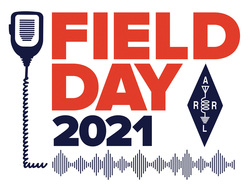 comes as many clubs and groups are starting preparations for Field Day in earnest. Field Day 2021 will take place June 26 - 27.
comes as many clubs and groups are starting preparations for Field Day in earnest. Field Day 2021 will take place June 26 - 27.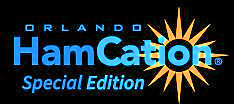 include ARRL CEO David Minster, NA2AA, and ARRL Director of Emergency Management Paul Gilbert, KE5ZW.
include ARRL CEO David Minster, NA2AA, and ARRL Director of Emergency Management Paul Gilbert, KE5ZW. hosting a special "
hosting a special ".jpg) effect" on the number of available exams, ARRL said. ARRL's
effect" on the number of available exams, ARRL said. ARRL's .jpg) The latest episode of the On the Air podcast (Episode 14) takes a deeper dive into the subject of HF antenna tuners, including some shopping tips.
The latest episode of the On the Air podcast (Episode 14) takes a deeper dive into the subject of HF antenna tuners, including some shopping tips..jpg) The latest edition of Eclectic Tech (Episode 27) features a discussion of virtual audio cables, plus a chat with Clint Turner, KA7OEI, about extremely slow CW, otherwise known as QRSS.
The latest edition of Eclectic Tech (Episode 27) features a discussion of virtual audio cables, plus a chat with Clint Turner, KA7OEI, about extremely slow CW, otherwise known as QRSS.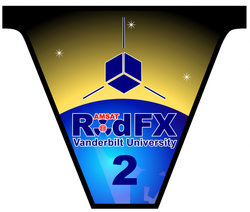 radiation effects experiments, is a joint mission of AMSAT and the Institute for Space and Defense Electronics at Vanderbilt University. While the telemetry beacon has not yet been heard, the transponder is partially operational at reduced signal strength.
radiation effects experiments, is a joint mission of AMSAT and the Institute for Space and Defense Electronics at Vanderbilt University. While the telemetry beacon has not yet been heard, the transponder is partially operational at reduced signal strength. and property and why this is an important amateur radio activity.
and property and why this is an important amateur radio activity..JPG) Regional Telecommunications Organizations (RTOs)," Lewis said. "The IARU has representatives in these RTOs, and the ITUâR contributing to the studies and helping to develop the regional positions on all the WRC agenda items. It is vital that the amateur community presents its views in a consolidated and consistent manner on each WRC agenda item across all the regions."
Regional Telecommunications Organizations (RTOs)," Lewis said. "The IARU has representatives in these RTOs, and the ITUâR contributing to the studies and helping to develop the regional positions on all the WRC agenda items. It is vital that the amateur community presents its views in a consolidated and consistent manner on each WRC agenda item across all the regions."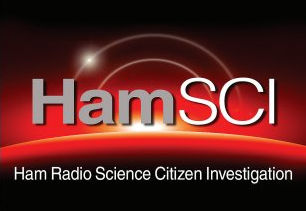 amateurs have an empirical knowledge of space weather and offer a ready-made volunteer science community.
amateurs have an empirical knowledge of space weather and offer a ready-made volunteer science community.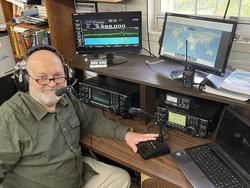 CQ has announced that Trent Fleming, N4DTF, of Germantown, Tennessee, has been named CQ magazine's VHF-Plus Editor. He succeeds Tony Emanuele, K8ZR. Fleming's first column will appear in the April 2021 issue of CQ.
CQ has announced that Trent Fleming, N4DTF, of Germantown, Tennessee, has been named CQ magazine's VHF-Plus Editor. He succeeds Tony Emanuele, K8ZR. Fleming's first column will appear in the April 2021 issue of CQ.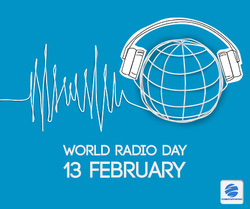 transmit frequency.
transmit frequency.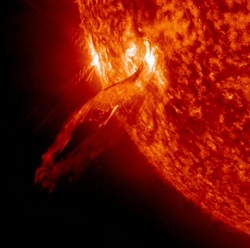 flare and interplanetary CME (ICME) shock-accelerated particle radiation," they said. The event would follow an initial CME that would "clear the path in front of it, allowing the storm cloud to hit Earth with maximum force."
flare and interplanetary CME (ICME) shock-accelerated particle radiation," they said. The event would follow an initial CME that would "clear the path in front of it, allowing the storm cloud to hit Earth with maximum force."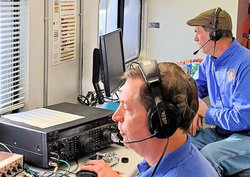
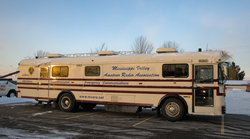 operations like this, as well as being able to use the communications bus as a mobile tool to educate students and the general public about amateur radio...and to support our communities with any emergency communication needs, as they may arise," Neader said.
operations like this, as well as being able to use the communications bus as a mobile tool to educate students and the general public about amateur radio...and to support our communities with any emergency communication needs, as they may arise," Neader said.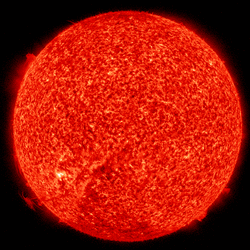 Predicted solar flux for the next 30 days is 72 on February 11 - 18; 78 on February 19 - 22; 76 on February 23 - 25; 74 on February 26; 73 on February 27 - March 1; 72 on March 2 - 7; 74 on March 8 - 10, and 76 on March 11 - 12. Flux values may rise to 78 again after the middle of March.
Predicted solar flux for the next 30 days is 72 on February 11 - 18; 78 on February 19 - 22; 76 on February 23 - 25; 74 on February 26; 73 on February 27 - March 1; 72 on March 2 - 7; 74 on March 8 - 10, and 76 on March 11 - 12. Flux values may rise to 78 again after the middle of March.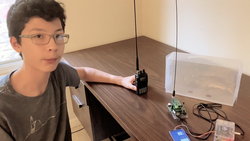 ARRL Member Sean Donelan, KM6NGN, of Concord, California, is the winner of the 2020 Congressional App Challenge (CAC) for California's 11th District, according to an announcement from US Representative Mark DeSaulnier (CA-11). Donelan, a 9th grader at Northgate High School, designed and created NetHam: The Public Service Event Coordinator's Third Hand. "My app is a radio that partially automates the more arduous and monotonous tasks of being the main operator of an amateur radio voice net. These tasks include automated sign-in of operators, easy tracking of participants without lengthy radio conversations, and an operator attention-keeper/attention-caller," Donelan told ARRL. "The point of these features is to allow a radio net control station to focus on the more important task of relaying pertinent information around a radio network, rather than focusing on constantly reciting and editing operator and event participant rosters."
ARRL Member Sean Donelan, KM6NGN, of Concord, California, is the winner of the 2020 Congressional App Challenge (CAC) for California's 11th District, according to an announcement from US Representative Mark DeSaulnier (CA-11). Donelan, a 9th grader at Northgate High School, designed and created NetHam: The Public Service Event Coordinator's Third Hand. "My app is a radio that partially automates the more arduous and monotonous tasks of being the main operator of an amateur radio voice net. These tasks include automated sign-in of operators, easy tracking of participants without lengthy radio conversations, and an operator attention-keeper/attention-caller," Donelan told ARRL. "The point of these features is to allow a radio net control station to focus on the more important task of relaying pertinent information around a radio network, rather than focusing on constantly reciting and editing operator and event participant rosters." A scientific paper has linked Jupiter with solar cycles. The
A scientific paper has linked Jupiter with solar cycles. The 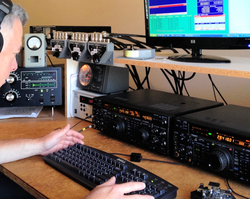 February 13 - 14 -- CQ WW RTTY WPX Contest
February 13 - 14 -- CQ WW RTTY WPX Contest.jpg)








